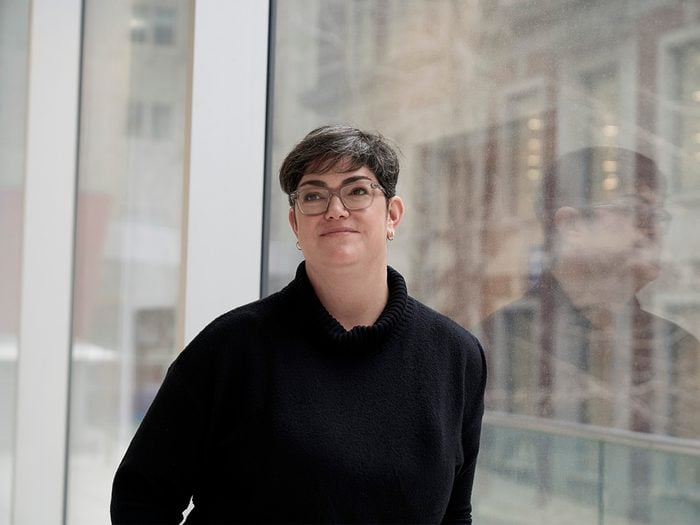How to Fix Canada’s Loneliness Epidemic, According to a Public Health Expert

Loneliness is as bad for our bodies as 15 daily cigarettes
Even before the pandemic forced so many of us into our homes and behind our screens, Canada was a nation of lonely folks. In 2019, nearly a quarter of Canadians said they experienced social isolation and loneliness. By 2021, that number had climbed to 35 percent. And, as with most health conditions, people who are already marginalized in society—including queer and racialized folks and seniors—find themselves at higher risk. “It’s rare that loneliness is caused by the individual,” says Kate Mulligan, a professor at the University of Toronto’s Dalla Lana School of Public Health. “It’s a response to what’s going on in their lives.”
(Related: What to Do When You’re Feeling Lonely)
Since loneliness is making us sick—it’s as bad for our bodies as 15 daily cigarettes—it stands to reason that social connection can help. Mulligan is also the senior director of the Canadian Institute for Social Prescribing, a two-year-old national hub that can link people to community-based supports—and to each other. Prescriptions might include time in nature, or an exercise class, or a visit to a museum, or stellar advice around money, housing or work. “It will depend on what you need and what matters to you,” she says. “But we see people reconnect with a sense of purpose and belonging in their own lives.”
And that can have real consequences for an overburdened health-care system. While formalized social prescribing is still pretty new, research out of the U.K. has shown it can reduce hospital admissions and doctor appointments, decrease feelings of loneliness and improve overall health. Here, Mulligan discusses who can benefit from a social prescription (spoiler: we all can) and why, sometimes, good health care is as simple as having someone watch your dog.
When we talk about social isolation, we’re not exactly talking about loneliness, are we?
They’re different. Usually, loneliness is the feeling we have when our social connections aren’t what we want or expect them to be. It feels bad, and it’s a signal that we need to be spending more time with other people. Social isolation is a descriptive term of having fewer social contacts in your life, and sometimes we’re okay with it. We don’t feel lonely about it.
Even before the pandemic, health researchers were sounding the alarm about the risks of loneliness. What do we know about those risks?
Social isolation and loneliness hurts our cardiovascular systems, our brains and our mental health; we’re at higher risk for dementia and heart attacks and strokes. And this is because we’re biologically designed to be in relationships with other people. When we don’t have relationships, we don’t have life.
Do we know more about the risks of loneliness than we do about the benefits of socializing?
Yes, but I think that’s because it’s taken quite a long time even to get the risks on the radar. I’d argue it was the pandemic that really shifted our understanding, because, finally, everybody had an experience of isolation. It wasn’t just people who are already facing marginalization. I think the research on the benefits of connection will start to catch up, and that’s where social prescribing can really help, because it’s a way to help us measure and evaluate the impact of people doing this reconnection.
What are the benefits, especially when it comes to our health-care system?
We’ve got this system that was basically designed at the time of Confederation. After that, the one major innovation was medicare . So the vast majority of our health spending goes to doctors, hospitals and pharmaceutical drugs, even though we’ve got a good 30 to 50 years of evidence that upwards of 80 percent of our health is determined by non-clinical factors [like food, housing and social inclusion]. People are going to the ER or the hospital for things that are beyond the design of our current system, and they’re being discharged back into the conditions that made them sick in the first place. That’s hard for people and for health-care providers. We’re doing the research now to see whether, if we move people even one step upstream, that can save money and relieve some of the burden that health-care providers face.
What does moving people upstream look like?
We tried out social prescribing in 11 different communities in Ontario in 2019, mostly within community health centres. Some people did gardening groups. Bereavement groups cropped up that allowed people to come together to talk, but also to cook together or do art or activities. Community health workers helped people apply for benefits, do their taxes or go through the hoops of accessing affordable housing. It really varied—we say that social prescribing shifts the focus from “what’s the matter with me?” to “what matters to me?” In Timiskaming [Ontario] one of the reasons older adults weren’t attending their health- and social-care appointments is because there was no one to take care of their pets. If nobody had asked what mattered to them, it wouldn’t have come up. Little things like that can mean a lot. In some ways, it goes against the hierarchy of needs, the idea that, you know, first you need shelter. Sometimes, first you need pet-sitting.
What did you hear from people in those 11 pilot projects?
I think it was a real lifeline. The community health worker—in the U.K., they’re called link workers—is so important, because it’s someone who gets what you’re going through, knows what’s available in the community and can help you actually follow through. Sometimes they might go with you to the first few swimming lessons, until you’ve made a friend and are feeling comfortable. That can mean a lot when you’re in a time of need.
How do you know if you could benefit from a social prescription?
Well, I think we all can, because of how much of our health is determined by these nonclinical factors. But especially if we’re repeatedly going to health care and not feeling better or getting the support we need. Sometimes we’ve been diagnosed with depression and medication is only doing so much. Sometimes we’re going to the doctor because we’re grieving. Sometimes we’re malnourished or living with food-related health conditions. Those are some indications that social prescribing could be for you.
And how do you find link workers?
They’re not a formal part of our health system right now, and I would resist making them another registered health professional. [The Canadian Institute for Social Prescribing] has been spending the past couple of years co-designing what we think social prescribing could look like across Canada. Even that conversation is rare, because we don’t have a Canadian health system, we have provincial health systems. But we’re having a lot of success already. British Columbia has gone from 20 communities with link workers to 100, funded by the Ministry of Health there, linking regional health authorities with smaller community organizations. So it’s not going back in the bottle—people can see the benefits. I wanted to ask about weak ties, because increasing those sorts of interactions may be less daunting than trying to widen your social network. Why are weak ties important?
Weak ties are the people that you kind of know, and they’re really important. They might be a fellow dog walker. They might be the barista at your coffee shop or your bus driver. People whose name you might not even know, but who you encounter in your daily life. We had so little of this during the pandemic, right? We maintained our family Zoom calls, but those everyday weak ties were very much eroded. And we need them because that’s what creates a strong community. We expand the boundaries of who we are when we bump into people who are different from ourselves.
I really missed that in the early months of the pandemic—the way that someone on a streetcar or in a yoga class just, like, existentially affirms me. It makes me feel, “okay, I am seen, I exist.”
Absolutely. And I think there is something biophysical about that. We are physically exchanging all sorts of information with other people all the time—we’re touching them, we’re smelling them, we’re having all these interactions. We’re disconnected from so many of those sensory experiences on a Zoom screen, and we forget that they’re a big part of human life. We’re not just brains, right? We have all these other senses that need to be engaged, and sometimes we need a little bit of coaching to get back into that.




